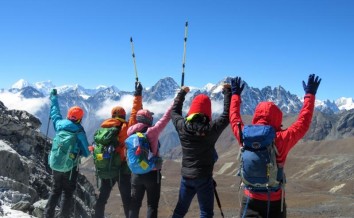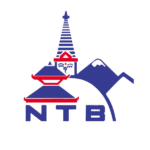-
Immerse yourself into exploring the unheard places in Everest Base Camp Trek By Road.
-
An alternative route for Lukla Flight to reach the Everest Base Camp is by road.
-
Experience the local culture and get scenic views of the lush hills, and terrace fields en route to Thamdanda in a private or shared jeep.
-
Traverse through the Capital Of Sherapa, exploring their local culture and daily lifestyle, Namche Bazaar.
-
An unobstructed view of Mt. Everest from a viewpoint, Kalapatthar.
-
Explore different floras and faunas in Sagarmatha National Park.
-
Panoramic views of mountain peaks like Mt. Everest, Lhotse, Nuptse, Cho Oyu, and Khubmu glacier.
EBC Trek by Road Overview
Explore the Everest Base Camp Trek by Road in 2025 with our 15-day itinerary. Experience the adventure of reaching EBC via the scenic drive to Salleri, avoiding flights. Find out the cost and detail information. Imagine standing at the foot of the world’s tallest peak, surrounded by snow-capped giants and fluttering prayer flags. The Everest Base Camp Trek by Road isn’t just a trek, it’s a life-changing adventure. This journey blends thrill, culture, and nature, making it a must for every adventurer.
Your journey begins in Kathmandu, driving to Thamdanda before trekking through Phakding, Namche Bazaar, Tengboche, Dingboche, and finally reaching Everest Base Camp and Kala Patthar. Each stop reveals new landscapes, from lush valleys to rugged trails, immersing you in the heart of the Khumbu region. As you ascend, Sagarmatha National Park welcomes you with rhododendron forests and rare wildlife like Himalayan Tahr and pheasants. Moreover, the panoramic views of Everest, Lhotse, Nuptse, and Cho Oyu are breathtaking. In addition, the majestic view of mountain peaks, especially at sunrise from Kala Patthar, where golden rays illuminate the Khumbu Glacier is breathtaking.
This trek is more than just for adventure, it's a cultural experience as well. In Tengboche, witness Mani Rimdu, a festival where monks perform sacred masked dances. Explore Namche Bazaar, the Sherpa hub, where ancient traditions thrive. Also, warm tea houses, Sherpa stories, and vibrant prayer flags make the journey even more special. The Everest Base Camp Trek by Road is the perfect blend of adventure, nature, and culture. From breathtaking views to festivals to experience while trekking in the Everest region, every step leaves a lasting memory. Whether a seasoned trekker or a first-time adventurer, this trek promises an experience of a lifetime.
Why choose Nepali Unique Trek for this trek?
At Nepal Unique Treks, we don’t just take you on a trek, we craft an unforgettable adventure. With over 20 years of experience, we have been guiding trekkers from around the world, ensuring seamless and hassle-free journeys. In addition, as a government-authorized trekking agency, we prioritize safety, comfort, and exceptional service to make your Himalayan experience truly remarkable.
Our team of expert guides is government-certified and has spent over a decade navigating the challenging trails of the Himalayas. Moreover, they have deep knowledge of the terrain, local culture, and high-altitude trekking. Furthermore, they ensure that you are well informed, safe, and immersed in the journey. Whether it’s tackling steep ascents, acclimatizing at higher altitudes, or understanding the traditions of the region, our guides are there to assist you every step of the way.
We understand that every trekker has a different pace and preference, which is why we offer customized itineraries tailored to your needs. Whether you want extra days for acclimatization, wish to explore hidden gems along the route, or need a trek designed around your schedule, we make it happen. Furthermore, our itineraries are crafted to provide the perfect balance of adventure, safety, and cultural immersion.
When it comes to logistics, we take care of everything, from securing permits to arranging the best available accommodations and meals. In addition, we carefully select tea houses and lodges to ensure your comfort, providing warm hospitality in the heart of the Himalayas. Our strong local connections also add an extra layer of convenience, making your trek smoother and more immersive.
Permits required for Everest Base Camp Trek By Road
Trekking through the Himalayas isn’t just about breathtaking landscapes and adventure. It also requires the right permits to ensure a smooth and hassle-free journey. Since some sections of the trek pass through protected areas, obtaining the necessary permits is mandatory. Furthermore, these permits not only grant access but also help authorities track trekkers for safety.
For the Everest Base Camp Trek by Road, you’ll need the following permits:
1. Sagarmatha National Park Entry Permit
2. Khumbu Pasang Lhamu Municipality Entry Permit
3. Trekker’s Information Management System (TIMS) Permit
The Sagarmatha National Park is a UNESCO World Heritage Site, home to diverse wildlife and stunning landscapes. To protect this pristine region, the Government of Nepal requires all trekkers to obtain a Sagarmatha National Park Entry Permit before entering. Furthermore, rangers at the entry checkpoints verify the permit, ensuring the conservation of the park while allowing you to explore its beauty.
Similarly, to support local communities and fund developmental projects, the Khumbu Pasang Lhamu Municipality requires trekkers to obtain a separate entry permit. This fee directly contributes to infrastructure improvements, helping sustain the trails and the villages along the trekking route.
Finally issued by Nepal’s tourism authorities, the TIMS Permit is essential for tracking trekkers within remote regions. This permit helps ensure safety by keeping a record of all trekkers entering the Everest region. In case of emergencies, rescue teams can use TIMS data to locate trekkers quickly.
At Nepal Unique Treks, we take care of all the paperwork so you don’t have to. Our team ensures a smooth permit process, allowing you to focus on preparing for the adventure ahead. Let us handle the formalities while you get ready to conquer Everest Base Camp Trek By Road.
Why Insurance is necessary for Everest Base Camp Trek By Road?
Trekking through the Himalayas is an adventure of a lifetime, but it comes with unpredictable risks. From sudden altitude sickness to unforeseen injuries or extreme weather, challenges can arise at any moment. In such situations, having the right travel insurance can be a lifesaver, ensuring you receive timely medical attention or emergency evacuation when needed.
Before starting your journey, it’s crucial to choose an insurance plan that covers the overall aspects. Policies vary, but the best ones cover medical expenses, high-altitude evacuation, trip cancellations, and lost baggage. Moreover, while traversing through remote areas, where medical facilities are scarce, a reliable insurance plan gives you peace of mind, allowing you to focus on the adventure.
Even though we schedule treks during the best seasons, like spring and autumn, weather conditions in the mountains remain unpredictable. Sudden storms or heavy snowfall can disrupt the route, forcing delays or even cancellations. With proper insurance, you can recover non-refundable costs and avoid unexpected financial burdens.
To summarize, while our expert guides will be there to assist you at every step, insurance provides an extra layer of protection. It ensures that, in case of emergencies, you receive immediate support without worrying about expenses.
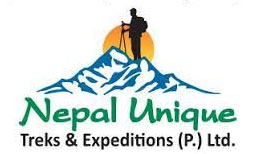
 WhatsApp
WhatsApp  Plan Your Trip
Plan Your Trip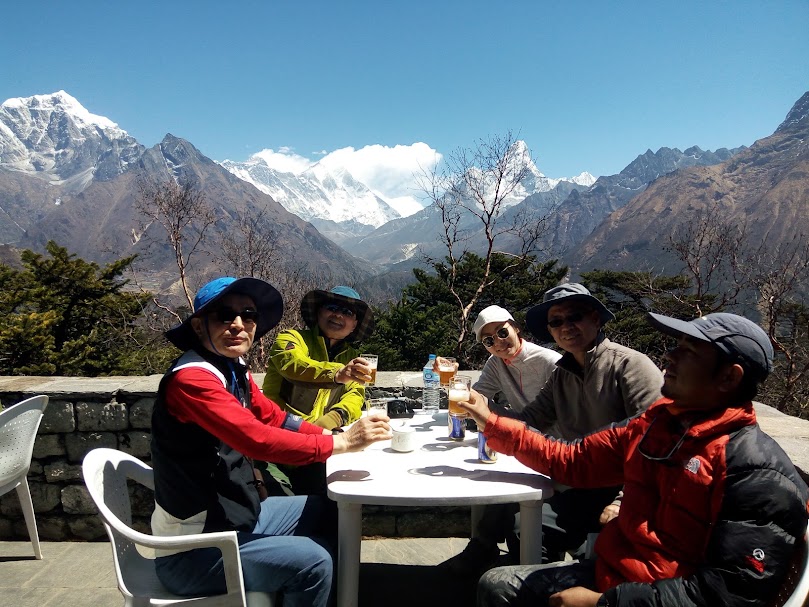





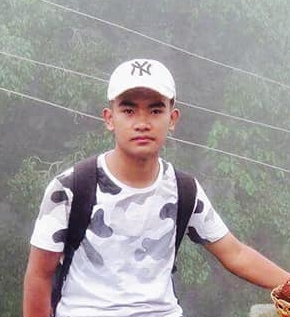



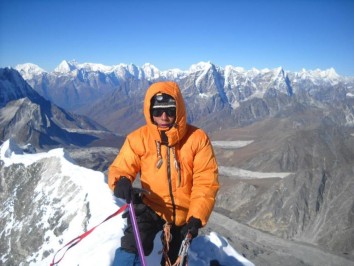
 US$2450
US$2450 
.jpg)



